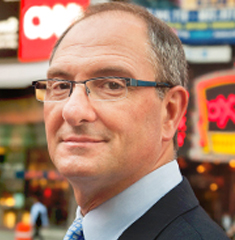Publicis Groupe, one of the world’s largest advertising holding companies, recently announced a restructuring that will organize the company into four business units—Publicis Worldwide, Publicis Media, Publicis.Sapient and Publicis Healthcare—rather than utilizing its current worldwide network strategy.
Little is expected to change at Publicis Healthcare, which operates 13 agencies, including Digitas Life HealthBrands, Razorfish Health and Saatchi & Saatchi Health, said Nick Colucci, CEO of Publicis Healthcare Communications Group.
Here he talks to MM&M‘s Jaimy Lee about the reorganization and what it means for the healthcare business.
Jaimy Lee (MM&M): What will change at Publicis Healthcare as a result of the reorganization?
Nick Colucci (PHCG): Materially nothing. It reaffirms the group. [Publicis Groupe CEO Maurice Levy] relooked at everything. Regardless of whether my competitors want to try to position themselves as the same as us, they are different. You can’t call one person at Omnicon, WPP or IPG—at Havas you can, yes—and say can you have someone speak for all of healthcare inside your organization.
There’s no one person. There is at Publicis. That’s the difference. He just reaffirmed that that’s going to stay in place. I’m not saying we’re better or worse. I’m just saying that the structure is different. He’s going to leave the healthcare vertical in place. He sees it as special and, quite frankly, operating well.
The whole thing Maurice is trying to do is stay focused on clients and not allow individual agency walls or barriers or different discipline barriers get in the way of delivering what is best for our clients’ business.
That’s the whole reason he did this, and the hope that it will spur more attraction in the marketplace for employees and for clients and more growth.
Lee: Would it be safe it say the other three businesses may start to look more like Publicis Healthcare?
Colucci: What he is trying to do is create more collaboration between the disciplines. It would be too big of a statement to say he wants them to look like us. I also think that he’s learned that when you consolidate leadership like that, if you put the right people in the right spots, it’s easier for people to work together.
Working together across disciplines and borders and boundaries is more a state of mind than it is P&Ls or proximity. It’s my theory, my belief. He’s trying to change those states of mind so that people feel they’re more easily connected and working across borders and disciplines and corporate boundaries. He’s trying to create more connecting points for them to do that.
Lee: There was another announcement earlier this year, also on the healthcare side. IPG merged ICC Lowe into FCB. In a statement IPG CEO Michael Roth had said something like the merger is better for pitches at the holding company level. Is there more interest in the industry now to operate that way?
Colucci: I think to a large degree, yes. Saatchi still exists. They work alongside in an organization where they are definitely independent but Digitas Health is a brother or sister. Eventually the leaders of both of those organizations report to me. It creates a different environment as opposed to reporting up separately.
Our clients are looking to us, specifically to these larger networks, to say: If you’re going to stay separate, with no connecting points, why did you come together to begin with? They’re looking for us to be able to connect when we need to for the benefit of their business. We have to have the right attitude and the right structure about doing that. We have to be able to recognize it and then we have to be able to activate it and we have to make sure the organization creates a facility for us to do that.
(This Q&A has been edited and condensed.)








